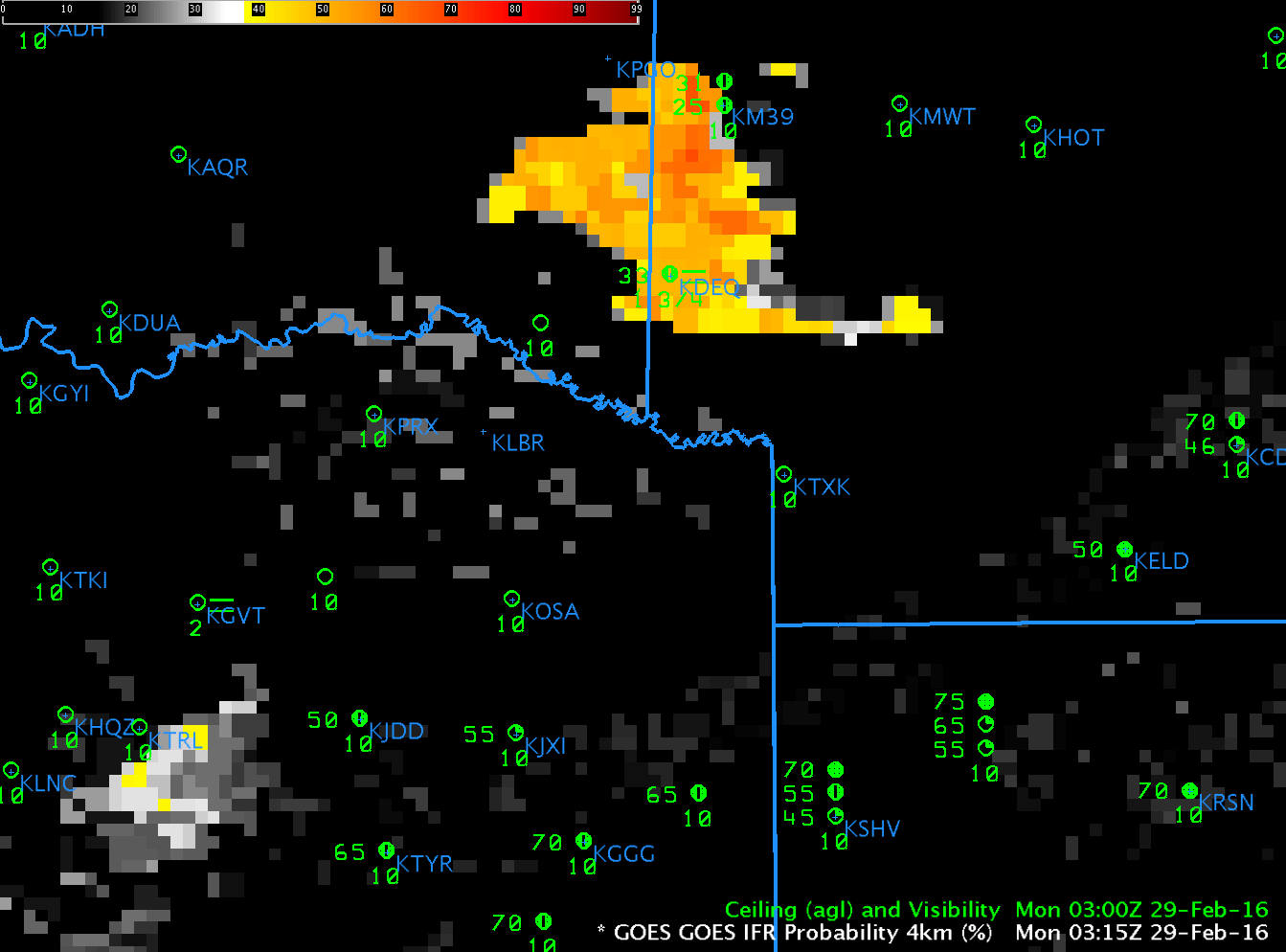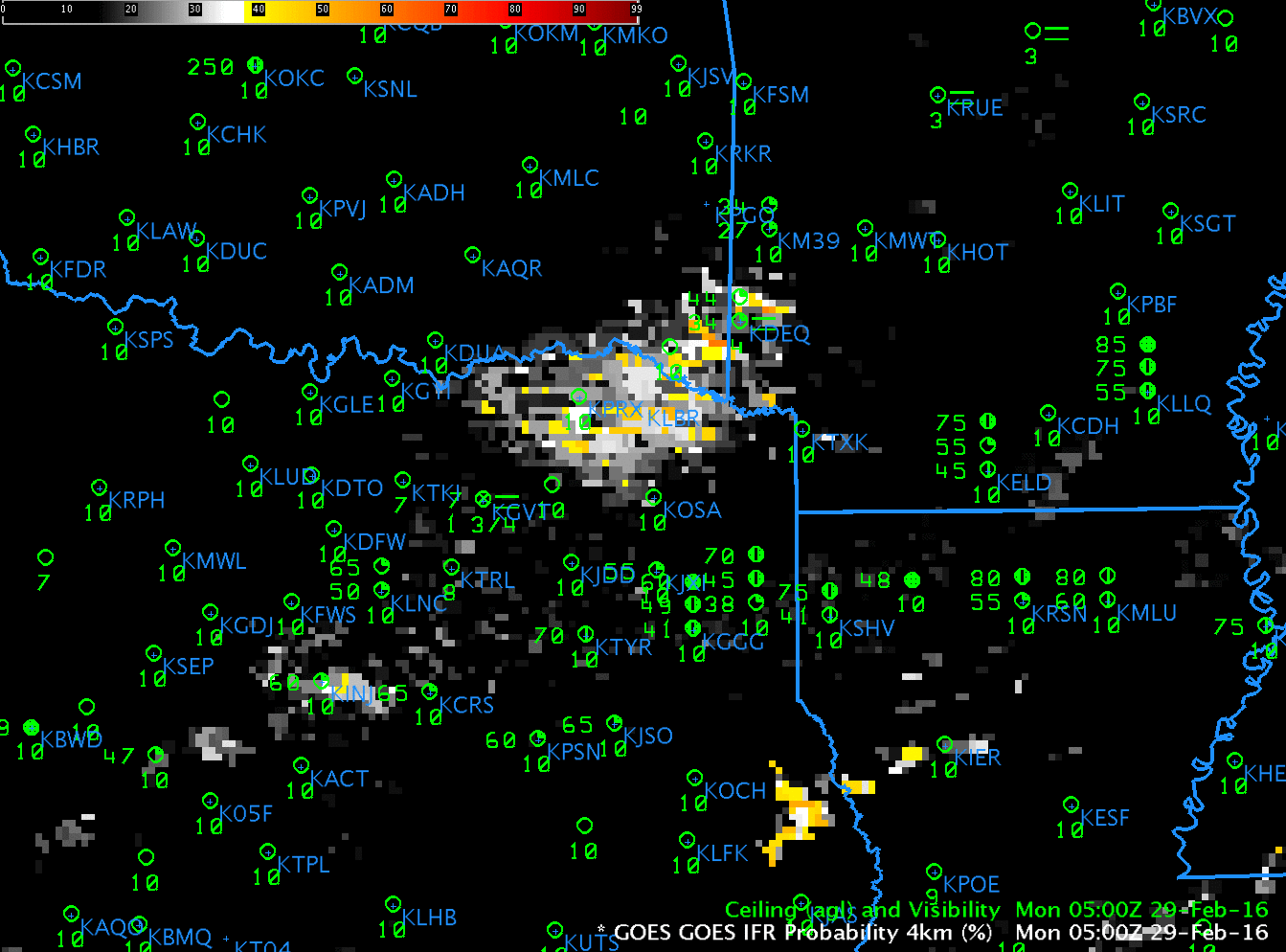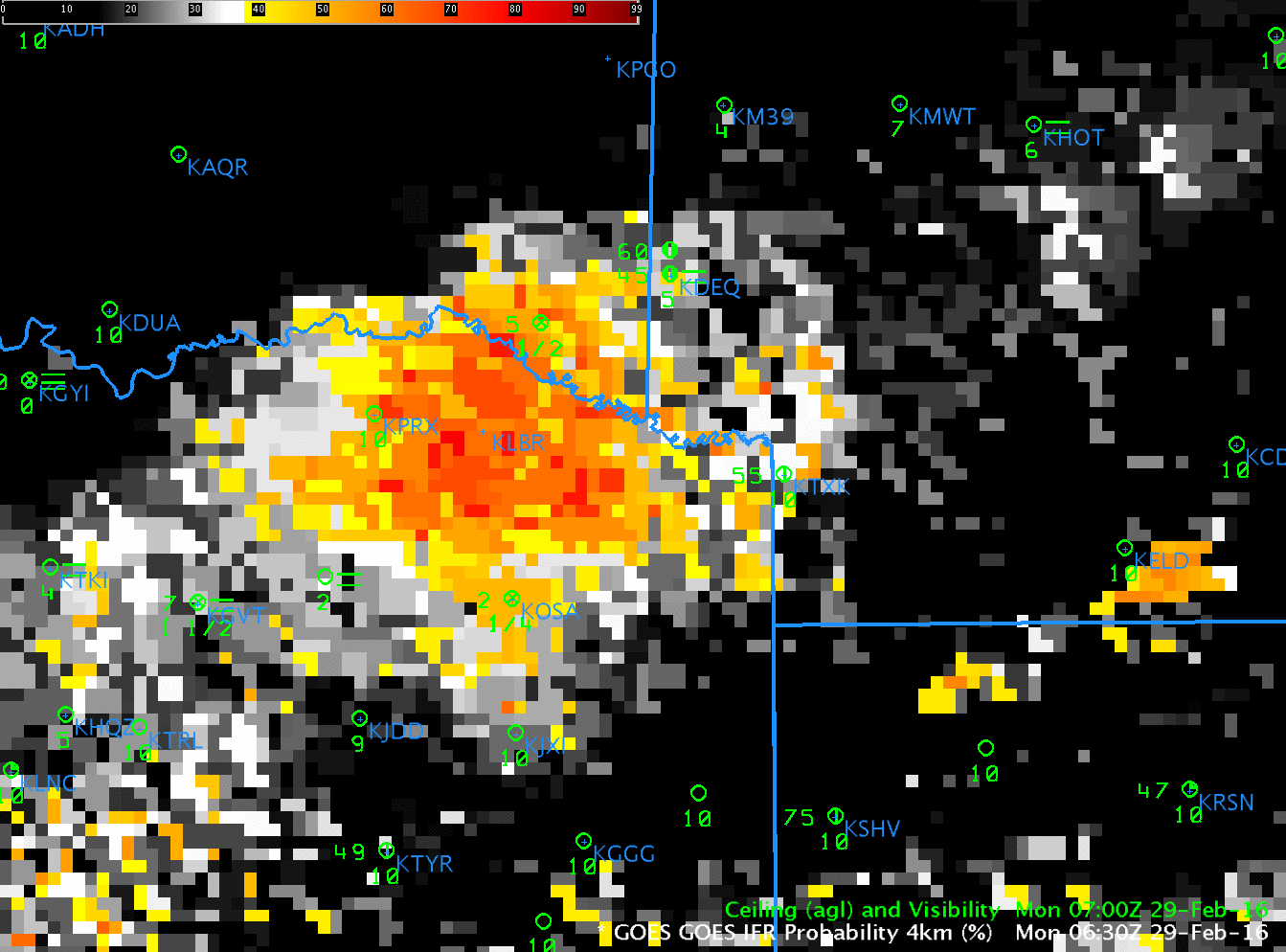
GOES-R IFR Probabilities, 2200 UTC on 28 February 2016 as well as surface observations of ceilings and visibilities (click to enlarge)
Late in the day on 28 February, as shown above, GOES-R IFR Probability fields included a small region of enhancement over west-central Arkansas and east-central Oklahoma. In this case, that field heralded the development of more widespread IFR conditions over northeast Texas (and surroundings). By 0300 on 29 February, below, IFR probailities in the region over east-central Oklahoma/west-central Arkansas had increased, and there is a suggestion of increasing IFR Probabilities over northeast Texas as well. This is a case where IFR Probabilities can alert a forecaster to pay attention to a region long before a hazard develops.

GOES-R IFR Probabilities, 0315 UTC on 29 February 2016 as well as surface observations of ceilings and visibilities (click to enlarge)
Late February starts the time when GOES-13 is near enough to eclipse season that stray light can creep into imagery. In this case, a large signal increase between 0500 and 0515, below, is in part related to stray light, and in part to low cloud development. By 0530, IFR Probability fields show less affect from stray light. (Click here for an animation of brightness temperature difference fields alone; Stray Light has an obvious impact at 0515 UTC).

GOES-R IFR Probability fields, 0500-0530 UTC, 29 February 2016, showing Stray Light Effects (Click to enlarge)
IFR Probability fields from 0615 through 1215 UTC are shown below. Very high IFR Probabilities (and IFR conditions) were widespread in the early morning over northeast Texas and surrounding states.

